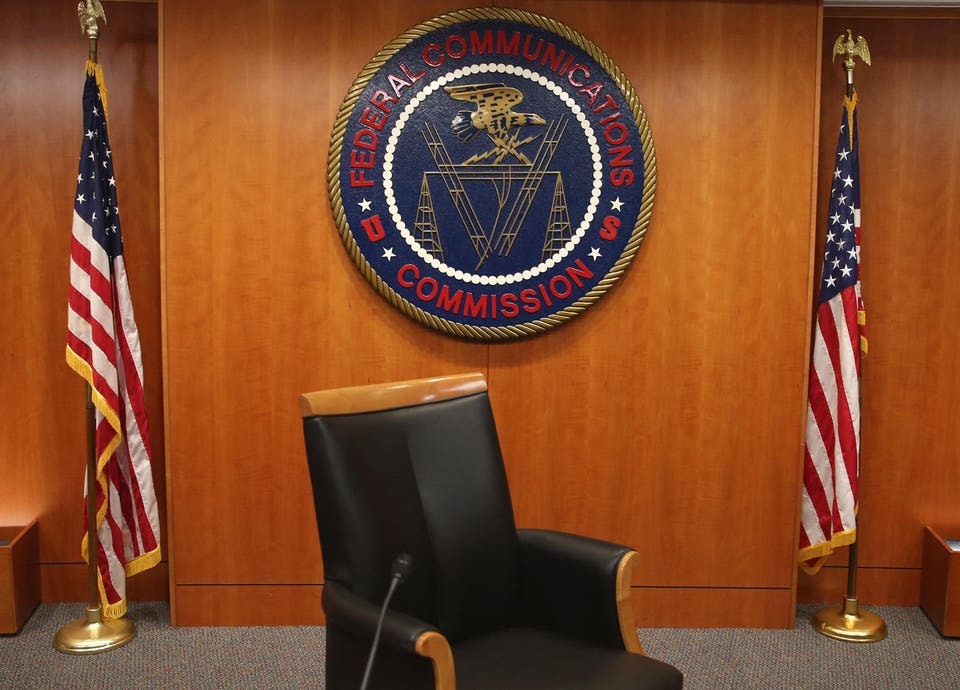Forbes Business Media The FCC Is Five Years Late On Its 2018 Broadcast Ownership Review; Why That Matters David Bloom Senior Contributor Opinions expressed by Forbes Contributors are their own. I’m a media/tech/entertainment writer, podcaster, speaker and analyst Following Oct 2, 2023, 05:57pm EDT | Press play to listen to this article! Got it! Share to Facebook Share to Twitter Share to Linkedin (Photo by Mark Wilson/Getty Images) Getty Images If you want a quick snapshot of bureaucratic dysfunction, take a look at this news tidbit: a federal court just gave the Federal Communications Commission 90 days to complete a required regular review of broadcast station ownership rules , a review that was already late when it started in long-ago 2019. Not only is the review five years late, the rules are supposed to be reviewed every four years.
Admittedly litigation held things up considerably, but at this rate, the 2022 review will be completed by, oh, about the time the broadcast industry enters its final stages of collapse. And that’s why a seemingly dry administrative task actually matters. The broadcast industry is facing enough daunting challenges without the FCC stumbling at a snail’s pace toward a long-overdue reconsideration of the wildly outdated laws limiting broadcast ownership.
The industry’s problems are manifold, beginning with media companies that strip-mined their broadcast networks to pump up the attractiveness of their streaming services. No surprise that broadcast and cable viewership is down big, from a peak of around 100 million U. S.
to somewhere between 60 million and 70 million. Advertisers are following the viewers, shifting spending to connected TVs, ad-supported streaming video (either free or as a low-end subscription tier), and social media. As the dollars flee, so do the prospects for broadcast’s long-term survivability.
MORE FOR YOU How Google’s Pixel 8 Pro Will Change Smartphones Forever Spooked Russians Welded Six-Foot-Tall Drone Armor On A 64-Year-Old T-54B Tank Flashing Red Warning 33 Trillion U S Debt Death Spiral Could Suddenly Trigger A Bitcoin Price Vicious Circle The regulatory regime dates back decades, to when broadcast was the only way people could get a TV signal. Congress wanted to reduce the possibility of excessive media concentration in this powerful new medium, an admirable concern when there were three networks. But broadcast is hardly the dominant delivery mechanism it once was.
The situation is so bad that even an inveterate dealmaker such as Sinclair Inc. CEO Christopher Ripley, whose company is the No. 2 broadcast station owner, has stopped buying more of them in what he calls an “overregulated industry.
” “(Unlike) our primary competitors, big media and big tech, which have nationwide and global platforms, broadcasters have been relegated to this very parochial little territory-by-territory model,” Ripley told me in August. “(It) maybe made sense in the 1970s, but certainly doesn’t make sense today. ” It’s useful to think back to what a different media landscape we had in the United States way back in 2018: Streaming services from Disney, Apple AAPL , Comcast CMCSA /NBCUniversal, what’s now Warner Bros.
Discovery, and others hadn’t launched yet, never mind become multi-billion-dollar operations with tens of millions of paying subscribers. Cord-cutting was happening, a bit, but mostly was vaguely worrisome background noise. Cable and broadcast remained the dominant way most Americans received “TV.
” Bob Iger was selling Marvel shows to Netflix NFLX , before deciding he was arming the enemy. Everybody else was happily pocketing those fat Netflix licensing checks too. That’s all changed (though the media companies are once again licensing out their shows instead of hoarding them for their own streaming services).
But broadcast continues to labor on under the old rules, and faces other leftover limits too. Ripley pointed to cable must-carry rules that don’t apply to so-called vMVPDs such as YouTube TV and Hulu+Live TV. “It’s another one of these regulatory loopholes or shadows from the past where, for some crazy reason, MVPDs like Comcast and DirecTV are treated different than virtual MVPDs, like YouTube TV,” Ripley said.
“One has a facility, one does not. That’s the only difference from a technical perspective. But they offer exactly the same service.
That creates a loophole for the networks to essentially leave us out of the negotiation. ” The limits on station ownership are a particularly pertinent issue for Disney, which is considering selling ABC, its eight owned & operated local stations, and other linear TV operations as it rejiggers its fundamental economic pillars. The restrictions also may affect what Shari Redstone eventually does with Paramount PARA Global, the owner of CBS and other batch of big O&O stations.
Among the potential interested bidders: NexStar, the No. 1 station group owner, which would face considerable legal complications in buying ABC and its O&O stations. Other early interest has reportedly been expressed by media entrepreneur Byron Allen and private equity companies.
The recent transformational deal between Charter and Disney throws a lifeline to the legacy TV bundle, which has pumped billions into the coffers of local broadcasters thanks to must-carry federal rules that require they be made available, and paid for, by cable providers. Now that cable providers can sell both the legacy bundle and media companies’ streaming services (Disney’s at least, for now), it likely will moderately slow the tide of transformation. But it’s way, way past time to remove ownership limitations on what’s left of the broadcast industry, or at least radically rethink the way those rules are configured.
As we spend more and more time on TikTok, video games, our cellphones, Netflix, Roblox, Apple TV+, immersive experiences and the like, the least we can do is give local broadcasters a chance at finding a life raft for continued relevance. Follow me on Twitter or LinkedIn . Check out my website .
David Bloom Editorial Standards Print Reprints & Permissions.
From: forbescrypto
URL: https://www.forbes.com/sites/dbloom/2023/10/02/the-fcc-is-five-years-late-on-its-2018-broadcast-ownership-review-why-that-matters/



